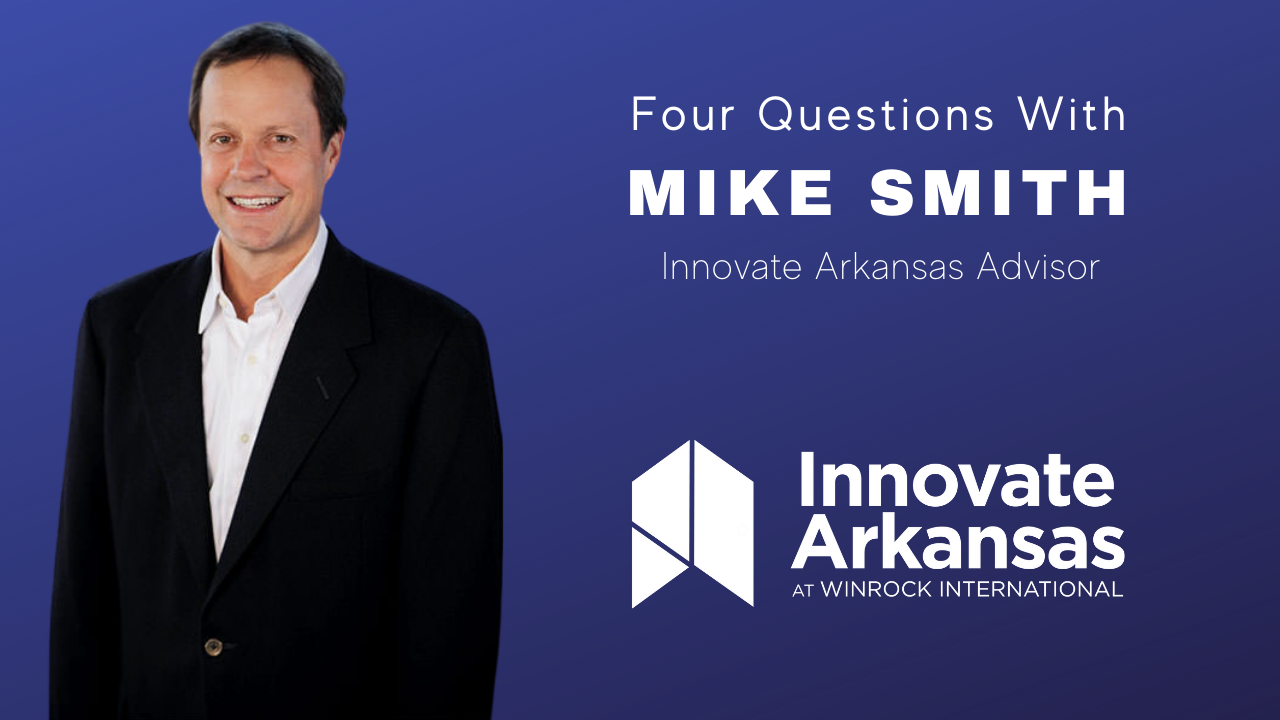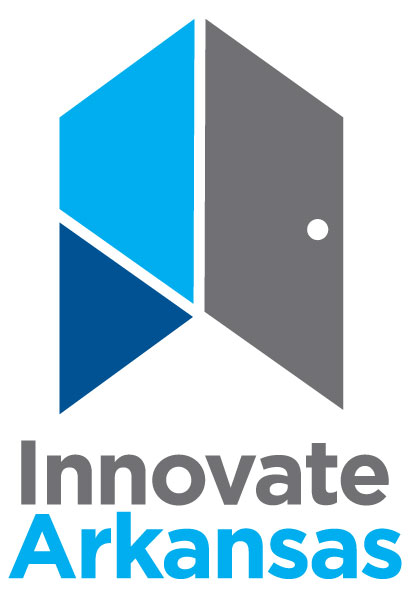Four Questions With Mike Smith, Innovate Arkansas Advisor
Mike Smith is one of the core Innovate Arkansas advisors who brings more than 20 years of business advisory experience to the team. Mike works with Innovate Arkansas companies on positioning, leadership, and capital.
Mike is a former senior vice president in the Corporate Finance Group of investment bank Stephens Inc. He completed more than 50 merger and acquisition, public offering, and private placement transactions for privately owned and publicly traded middle-market companies during his 13 years there. He also sourced and executed principal investments for the Stephens family. Mike is actively involved in venture capital and entrepreneurial development in the region. He serves on several private company boards and speaks about venture capital and early-stage business development at industry conferences and events. Mike holds a Bachelor’s of Economics from Duke University and an M.B.A. with an emphasis in finance from Duke University’s Fuqua School of Business.
In early meetings with Innovate Arkansas, the conversations with founders are focused on the lean canvas. The primary discussions center around defining the problem the entrepreneur is looking to solve. We talked with Mike about the importance of the “problem” box of the lean canvas and why we spend so much time discussing that aspect of the business idea.
Why is understanding the problem so integral to a startup?
More startup businesses fail than succeed. At Innovate Arkansas, we work with entrepreneurs to create a foundation for success. Defining the “problem” faced by potential buyers is the first building block of that foundation. Many factors contribute to startup failure, but most fail because they do not address a significant unmet need or “problem” worth paying for by the target audience. If there is no apparent problem to solve, the founder may just have a neat idea or a nice-to-have product or service. While some people may pay for that nice-to-have idea, most people will not buy it if it does not solve a significant pain point. With a customer problem that is significant enough to get paid to solve, the startup has a fighting chance to develop a scalable business.
What would you say the difference is between an idea and a problem?
An idea is usually a founder hunch, a potential opportunity, or a great solution that has not yet been validated with customer discovery. A problem is a clear customer need that has been discovered with target customer interaction and interviews that substantiate the need. “Customer discovery” is a critical component of defining the problem. While the founder may think they would pay for the solution presented until the problem is validated among potential customers (who are not related and personally known by the founder), it is just an idea. Building a business will require a balance between the concept, vision, and the reality of the problem.
How does a startup founder avoid falling into the trap of working on a solution in search of a problem?
When the founder starts with a solution and then has to identify the problem, it can be a long, expensive, and inefficient process. To avoid this trap, founders should focus on the issues that target customers face. This is best done with a good customer development interview process, otherwise known as “getting out of the building.” At Innovate Arkansas, we work with clients to develop relevant customer interview questions and a discussion guide and coach founders about approaching these interviews without leading the potential customers to the solution or pitching the idea. Once they’ve conducted effective interviews, we work with them to synthesize the learning by looking for patterns and challenging assumptions.
What are key questions every startup founder should ask when working on a problem statement?
When working on a problem statement, some initial questions founders should ask include: “What are the one or two most significant problems my target customer faces?” “Where does the potential buyer struggle in the process?” “How frequently does the buyer face these challenges?” “How are customers currently solving the problem?” “Who are the potential buyers?” “How much are customers willing to pay to solve this problem?” “Who is the competition, and how is this solution different?” Suppose the answers are clear from the results of a well-executed customer development process. In that case, the founder can develop a problem statement and has a good starting point to consider testing a minimally viable product (MVP) with beta customers identified from customer development.


